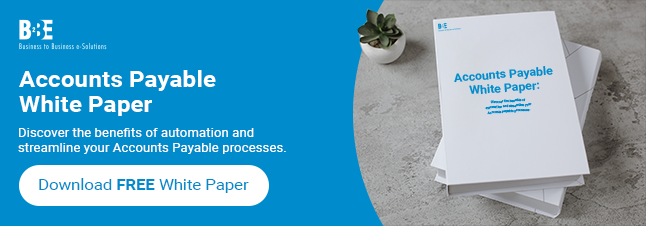OCR technology is transforming how organisations handle the accounts payable process. Because 应付账款 often deals with high volumes of invoices, even small improvements can deliver big results.
What is OCR technology?
In the context of accounts payable, OCR refers to the ability to scan paper or image-based invoices and convert them into structured, digital data. Instead of manually entering invoice details into finance systems, OCR technology reads key information like supplier names, invoice numbers, and payment amounts. This speeds up processing, reduces errors, and lays the foundation for more efficient and automated accounts payable workflows.
下面请观看我们的视频综述:
What can OCR technology do for accounts payable?
Automating data capture
OCR technology can scan and extract key details such as invoice numbers, supplier names, and payment amounts. This means staff no longer need to retype information into finance systems. Errors are reduced because the data capture process becomes automated. So, accuracy improves, and time once spent checking entries can be used for more valuable tasks.
Streamlining invoice matching and validation
OCR technology also supports invoice matching. By pulling data directly from invoices, it can match details with purchase orders or receipts. When the information aligns, the invoice can move forward without delay. But when mismatches occur, the system highlights them quickly so they can be resolved. This keeps the process transparent while reducing bottlenecks.
Speeding up approval workflows
OCR integrates with digital workflows, so invoices can be routed automatically to the right approvers. Because everything is electronic, the approval process becomes faster and more visible. Managers can review and approve invoices on time, and payment schedules are easier to meet. This reduces late fees and improves supplier relationships.
Gaining better insights from accounts payable
OCR technology doesn’t just capture data; it also creates opportunities for analysis. With invoice data stored digitally, it becomes easier to track spending, monitor supplier performance, and identify trends. Because of this visibility, organisations can improve cash flow planning and make better financial decisions.
Building a foundation for automation
OCR is not a full automation solution on its own, but it is often the first step. Once invoice data is digitised, it can feed into wider accounts payable automation systems. This creates opportunities for straight-through processing, stronger compliance, and better control of working capital.
Conclusion
In summary, OCR technology helps accounts payable teams capture, validate, and process invoices with greater speed and accuracy. It reduces errors, shortens approval cycles, and provides better insights for financial decision-making. By laying the groundwork for automation, it moves organisations closer to a fully digital accounts payable process.
Want to explore how automation can improve accounts payable beyond OCR technology? Contact us to learn more about solutions that simplify invoice management.

